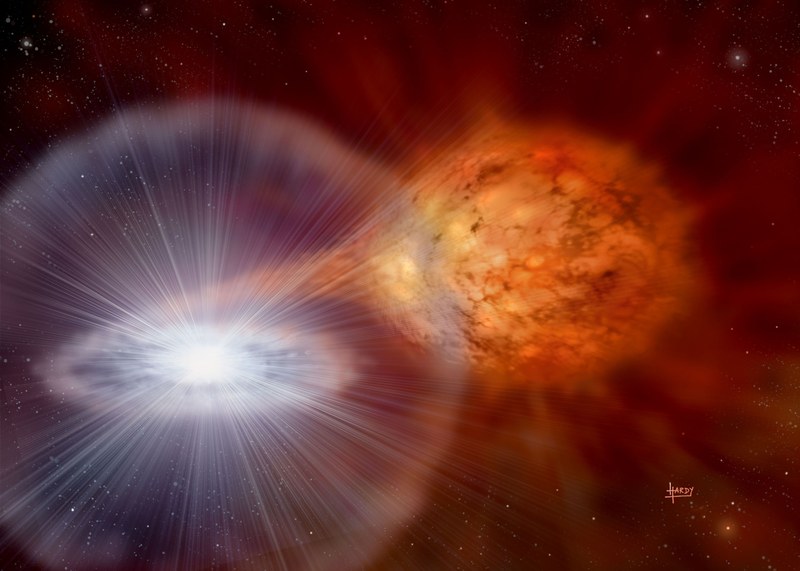Study of the effects of rotation in hydrodynamic models of accretion on compact stars
Jul 11, 2023
David Martin Rodriguez defended his thesis supervised by Jordi José on July 7, 2023 at the Diagonal-Besòs Campus. Entitled "Hydrodynamic Models of Accretion onto Rotating Compact Stars", the thesis focuses on investigating the effects of rotation and the instabilities caused by it (meridional circulation and turbulence due to differential rotation) in type I X-ray eruptions ( or type I X-Ray Bursts), which take place on the surface of accreting neutron stars. In particular, the study focuses on the study of the observable properties (light curves, recurrence periods and nucleosynthesis) of these eruptions
Hydrodynamic models are essential for our understanding of the physics of stellar explosions, and specifically, for their potential contribution to the Galactic chemical abundances. In this Work, a one-dimensional (spherically symmetric), hydrodynamic code, in Lagrangian formulation (SHIVA code), built originally to model classical nova outbursts (José and Hernanz 1998; Jose 2016), has been improved both computationally, with its parallelization (Martin, Jose, and Longland 2018), and physically with the addition of rotation. These improvements allow us to present here the first models of X-ray bursts that include accretion, convection, nucleosynthesis, and rotation simultaneously. Rotation is traditionally implemented in 1D codes by adopting three reasonable assumptions: 1) Shellular rotation (angular velocity and chemical composition constant on an isobar); 2) Roche approximation (i.e. mass strongly centrally concentrated); and 3) Equivalent volumes (the rotating ellipsoid is approximated by a sphere of the same volume). The instabilities induced by rotation are treated by the equation of transport of angular momentum by meridional circulation, turbulent horizontal diffusivity, and gradients of the mean molecular weight. This equation has been extended to also account for expansion and contraction in non-stationary models.
In this PhD Thesis, we investigate the effects of rotation on the properties of X-ray bursts. Our calculations confirmed the pressure-lifting effect caused by rotation as well as the significant photospheric expansion growth with the increase of the angular velocity. Moreover, rotation has also an effect on several observables of type I X-ray bursts: the lightcurves and the associated nucleosynthesis. Models with larger rotational velocities result in larger duration lightcurves, with notoriously different shape. Rotation also reduces the recurrence times between bursts. With respect to the nucleosynthesis produced in type I X-ray bursts, all models reported on this thesis show a similar abundance pattern after each burst, dominated by the presence of intermediate-mass elements (i.e., 32S, 60Ni, 64Zn). The most noticeable difference seen is the amount of unburned fuel (1H and 4He), leftover after the bursting sequence, which depends on the specific rotational velocity adopted.

Share: